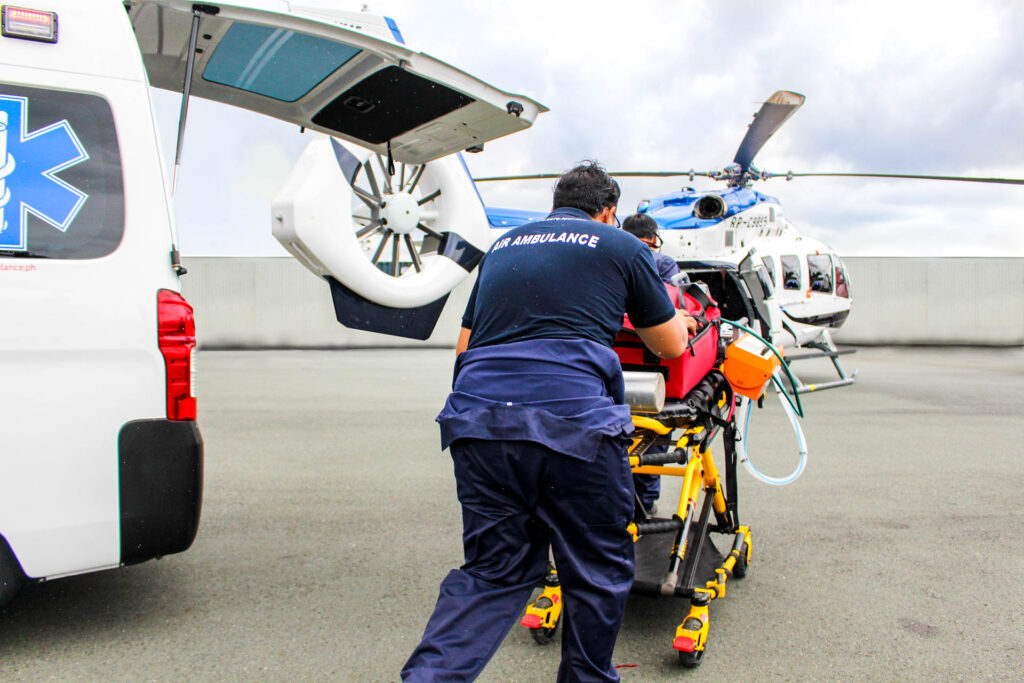Medical Air Lift Service
Our Partner Hospitals with Helipad Capability





Air Medical Evacuation: A Lifeline in Critical Situations
Air medical evacuation, also known as aeromedical evacuation or medevac, plays a crucial role in providing rapid and specialized medical care to individuals in critical situations. This mode of transport utilizes aircraft equipped with medical facilities and a highly skilled medical team to swiftly and safely evacuate patients from remote or inaccessible areas to advanced healthcare facilities. Air medical evacuation has become a vital component of modern emergency medical services, saving countless lives by reducing transit times and ensuring timely access to specialized care.


The Need for Air Medical Evacuation: In emergencies such as natural disasters, war zones, or remote areas lacking adequate medical infrastructure, access to prompt and appropriate medical treatment can be severely limited. This is where air medical evacuation proves invaluable. It enables the transportation of patients over long distances, bypassing geographical barriers, adverse weather conditions, and inadequate ground transportation systems. Whether it is providing critical care to trauma victims, delivering medical supplies to disaster-stricken regions, or transferring patients requiring specialized treatment, air medical evacuation bridges the gap and offers a lifeline in dire circumstances.
Capabilities and Infrastructure: Air medical evacuation utilizes a range of aircraft, from helicopters to fixed-wing airplanes, each tailored to specific requirements. These aircraft are equipped with medical equipment and staffed by a dedicated team of healthcare professionals, including doctors, nurses, paramedics, and respiratory therapists. The medical crew ensures the provision of continuous care during the flight, with the ability to stabilize and monitor patients, administer medications, perform life-saving interventions, and manage critical conditions.


Advantages and Impact: Air medical evacuation offers several advantages over traditional ground transportation in critical situations. Time-sensitive medical emergencies require swift action, and air transport significantly reduces transit times, allowing patients to reach appropriate medical facilities expeditiously. This can be particularly crucial for trauma cases, where every minute saved can make a significant difference in outcomes. Additionally, air medical evacuation ensures the stability of patients during transport, minimizing the risk of deterioration or complications.
Air medical evacuation plays an indispensable role in the realm of emergency medical services. By providing swift and specialized care to individuals in critical situations, it saves lives, improves outcomes, and extends medical reach to remote or inaccessible areas. As technology and infrastructure continue to evolve, air medevac will undoubtedly become even more efficient, capable, and accessible, bolstering emergency healthcare systems and delivering vital support in times of dire need.

Challenges and Considerations: While air medical evacuation offers critical benefits, there are challenges and considerations to address. Weather conditions, airspace regulations, and limited landing sites can pose obstacles to safe and efficient operations. The availability of trained medical personnel, especially in remote areas, is another significant concern. Additionally, the cost of air medical evacuation can be high, making it inaccessible to some individuals or regions.
To overcome these challenges, ongoing advancements in aviation technology, aircraft design, and telemedicine are being pursued. Collaboration between government agencies, healthcare organizations, and aviation stakeholders is crucial for establishing robust air medical evacuation systems, ensuring adequate resources, and addressing regulatory and logistical barriers.

